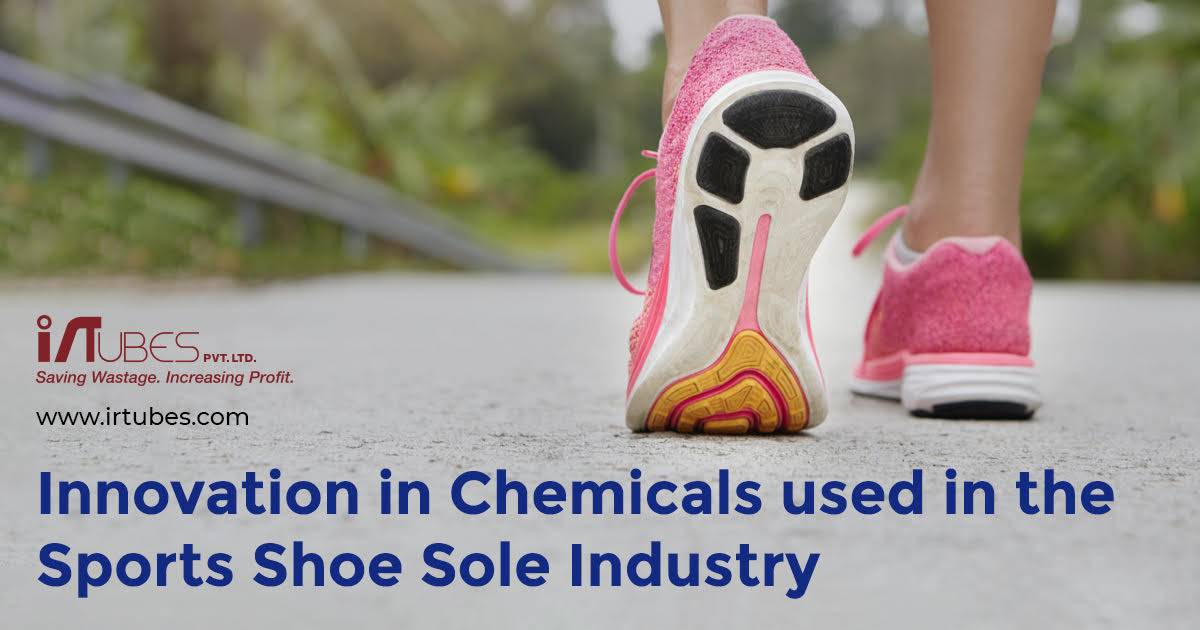
Vietnam and China are the key manufacturing hubs for almost all major footwear brands in the US. Covid has played rogue and it has led to a disruption in manufacturing. Vietnam has faced labor unrest last year which exacerbated the issue. As this article goes out, we have Ukraine and Russia at war and the fall out of this is that trade sanctions are being put in place. China too has a large manufacturing base that serves the sports shoe industry. All this does not augur well for business continuity. With a view to diversify geographically and balance out issues that cannot be controlled, many of these manufacturing companies have been in talks with the Indian government to set up facilities in India. Some of them have set up in zones and in states that provide companies with incentives.
In my previous article, I had said that brands like Nike, Reebok, Adidas, and many others have gone on record and set goals for sustainable production processes and materials. They have gone beyond the perception that waste and pollution are only at the end of the life cycle of a shoe, where one chucks out the shoe, only to land in a landfill, unable to degrade. They have made huge inroads to monitor and eliminate the use of restricted substances in all stages of the production chain.
Shoe manufacturing companies that have been set up in India and who cater to the big brands will need to strictly adhere to compliance standards set out to meet environmental and sustainable standards. In the shoe industry the manufacturing of the shoe is almost always outsourced. The processes are not always environmentally friendly and sustainable. Big brands however, have stringent controls over their manufacturing process, wherever in the world their manufacturing might be. If one has to do a Google search on best practices in manufacturing vis a vis these brands, you will see that they have gone the extra mile to ensure that their consumers are updated on their efforts in limiting their environmental impact. The brands recognize that specific groups of consumers have buying preferences for environmentally friendly products.
Changing Consumer Behavior – The Driver
It is this change in consumer behavior that shoe manufacturers need to take very seriously if they want to stay in business. This in itself will be an incentive for manufacturers to adopt processes and use materials that are more sustainable. Manufacturers of shoe soles would be wise to take up the use of environmentally friendly chemicals as per global standards – REACH and ROHS compliant. Chemical companies are continually researching and innovating to reduce the use of RSL (Restricted Substances List) substances in their products. This article focuses on the innovations in the chemical industry, especially for chemicals used in shoe sole manufacture.
The typical composition of a shoe sole made of rubber is Rubber, Silica filled reinforcement, Antioxidants, Antiozonants, Activators, Zinc Oxide, Stearic Acid, Processing Aids, Pigments, Sulphur and Accelerators. It is evident that a considerable number of chemicals go into the making and curing of rubber in shoe soles.
Traditionally the ure system is made up of Sulphur, MBT and MBTS combination. However, thiazoles like MBT and MBTS can cause allergic reactions. With ongoing research MBT was replaced with TBzTD.
Challenges for Multicolored Shoe Soles
Sports shoe soles are produced in two or three colors and designs. This lends to the vibrant, youthful image that brands would like to identify with. Herein, lies the challenge as when compression molding of two or three colors are used, ‘slow’ and ‘fast’ cures are required to produce the final article. ‘Slow’ cures require longer processing safety and ‘fast’ cures require relatively short processing safety. Further, both these cures are required to produce the final article in the same cure time at 150 degrees centigrade within specification limits.
Development Of New Dispersions and Blends
Research has been ongoing to investigate other compounding materials and their combinations for cure performance primarily in the following areas:
- To match rheology of a MBTS/TBzTD/Sulphur based cure system
- To increase or decrease processing safety without significantly affecting cure rate and final cure time
All this with no compromise on established levels of product performance whilst using environmentally safer additives.
The Result
- Matched it with MBTS/TBzTD and developed AS100/TBzTD. Thereby finding a substitute for MBTS which causes allergic reactions.
- Robinson has gone one step further to make a proprietory blend of TBzTD, inhibitors, retarders and binders to make Robac SC.
- AS100/Robac SC/Sulphur is now the cure system that has no RSL
CASE I
Substitution for MBTS with a New Environmentally Friendly Product – AS100
Validating AS100/TBzTD with specification limits set for each cure using ts2 and t90 at 150 Degrees centigrade. Whilst chemicals and parameters investigated for rheological effects were PEG4000, Retarder, Activator and Temperature. As illustrated below






Conclusion
- The type of accelerators, their combinations and concentration, compounding ingredients, temperature and masterbatch itself affects Cure Rheology
- Adding PEG4000 is required for cure in silica filled rubber blend based on BR/NBR/IR
- The addition of a retarder to the AS100/TBzTD/Sulphur cure can improve processing safety which is similar to MBTS/TBzTD/S cure. It is suitable for a ‘slow’ cure in multicolor compression molding applications
- The addition of an activator reduces the processing safety of AS100/TBzTD/Sulphur cure. This feature is useful for a ‘fast’ cure. It is also useful in low temperature cure
- Increasing the level of TBzTD/Sulphur cure improves processing safety and cure state
- Reduction of cure temperature from 150 Degrees centigrade to 145 degrees centigrade facilitates energy reduction, cost saving and has a reduced impact on the environment.
CASE II
Development of a Proprietory Blend of TBzTD, Inhibitors, Retarders and Binders to Make Robac SC that Contains no Materials That are on the ‘Restricted Substances List’ (RSL) of Major Shoe Manufacturers
Below is the laboratory experiment using TBzTD and Robac SC
Comparison of Robac SC and TBzTD Performance in a Typical BR/IR/NBR Rubber Masterbatch
The effectiveness of substituting TBzTD by Robac SC at an equal TBzTD loading was investigated in a typical rubber masterbatch.
| Typical Rubber Formulation | Part |
| Rubbers (BR/IR/NBR) | 100 |
| Silica Filler | 45-50 |
| Activators & processing aid | 5-6 |
| Zinc Oxide | 5 |
| Stearic Acid | 1 |
Cure System
| Ingredients | Mix 1 | Mix 2 |
| Sulfur | 1.8 | 1.8 |
| AS100 | 0.65 | 0.65 |
| TBzTD | 0.3 | – |
| Robac SC | – | 0.3 |
The ingredients of Mix 1 and Mix 2 are given in phr (100% active).
Sulfur was used as Sulfur PM80, AS100 was used as AS100PM40SBR, TBzTD was used as TBzTDPM70 and for Mix 2 equivalent amount of TBzTD was used as in Mix 1 via Robac SC
The cure systems were mixed into a typical rubber mix, as shown above, on an open 2-Roll Mill. These were then left to cool for at 2 hours prior to testing.
Rheological Properties at 150°C as Measured on MDR 2000E
The rheological properties of the mixes were assessed at 150°C using Monsanto MDR2000E Rheometer, Alpha Technologies.

| Data | Mix 1 | Mix 2 |
| T10 (Minutes) | 2.47 | 3.07 |
| T90 (Minutes) | 4.01 | 4.63 |
| MH (lb.in) | 27.58 | 27.85 |
| Cure rate | 16.99 | 16.41 |
Results show that the onset of cure is much longer with Robac SC compared to TBzTD. The rate and state of cure is virtually unaffected.
Physical Properties of Cured Rubber
Rubber sheets were compression molded for T90 x 1.5 minutes at 150°C to prepare D type dumb-bells for tensile properties measurement. Tensile properties were determined to BS903: Part A2 using Instron Tensile testing machine with Blue Hill software.
International Rubber Hardness Degree (IRHD) of samples was tested by using the Wallace Rubber Hardness Tester.
Ageing studies were carried out in Wallace cell ovens.
| Parameter Tested | Mix 1 | Mix 2 | ||
| Before Ageing | After Ageing 7 days at 70°C | Before Ageing | After Ageing 7 days at 70°C | |
| Hardness (IRHD) | 75 | 82 | 74 | 80 |
| Ultimate Tensile Stress (MPa) | 10.5 | 12.2 | 10.6 | 11.9 |
| Strain at Break (%) | 748 | 575 | 787 | 607 |
| 300% Modulus (MPa) | 2.94 | 5.29 | 2.5 | 4.8 |
| 500% Modulus (MPa) | 5.13 | 9.43 | 4.47 | 9.02 |
| Trouser Tear Test (MPa) | 2.86 | – | 2.87 | – |
| V Notch Tear Test (MPa) | 5.16 | – | 5.27 | – |
The tensile results are very similar for Mix 1 and mix 2. Robac SC show no detrimental effect on the physical properties of the cured rubber either before or after heat ageing at 70ºC.
Conclusions
Benefits of Robac SC
Robac SC offers a scorch time delay to the ultra-accelerators without generating regulated N-nitrosamines or leaving any thiazole residues in the cured rubber.
Robac SC increases the scorch time of AS100PM40SBR compared to TBzTD in diene containing rubbers (NR, SBR, BR, NBR) offering ‘slow’ cure.
Robac SC slow cure is useful in multicomponent and thick articles, such as multicolored or thick shoe soles.
Other Findings
Rheometer Time: Stayed consistent over 4 days storage with minimum change.
Physical Tests: Hardness, 300% modulus, tensile, elongation, tear, abrasion all matched standard which uses MBTS.
Other Tests: Ageing, washing, bonding, cosmetic tests: All passed on finished article.
Defect Rate: No obvious differences found between control, using MBTS, and Robac SC formula.
The above findings gave successful trial results.
For the slower onset of cure, it is recommended Sulfur 1.8phr, AS100 0.4-0.6phr and TBZTD active in Robac SC at 0.6-0.75ph
Optimization at a Production Scale
Homogeneous mixing is needed for Robac SC to work effectively. In order to achieve this both dispersive and distributive mixing have to occur in the correct order.
Dispersive mixing reduces particle size, requires high shear forces and high viscosity. Whereas, distributive mixing redistributes ingredients evenly, requires lower shear forces and constant movement of material around the mixing chamber.
** Technical details have been reproduced with appropriate permissions
I R Tubes Private Ltd., Pune are distributors for quality chemicals of Deutsche Oelfabrik of Germany, Omya UK Ltd., Robinson Brothers, UK, Emery Oleochemicals Ltd and Aquaspersions. Our chemicals are used in the manufacture of Rubber, Plastics, Latex, Adhesives and Sealants.
Raju Jethmalani
IRTubes Pvt. Ltd., Pune
Share on:
